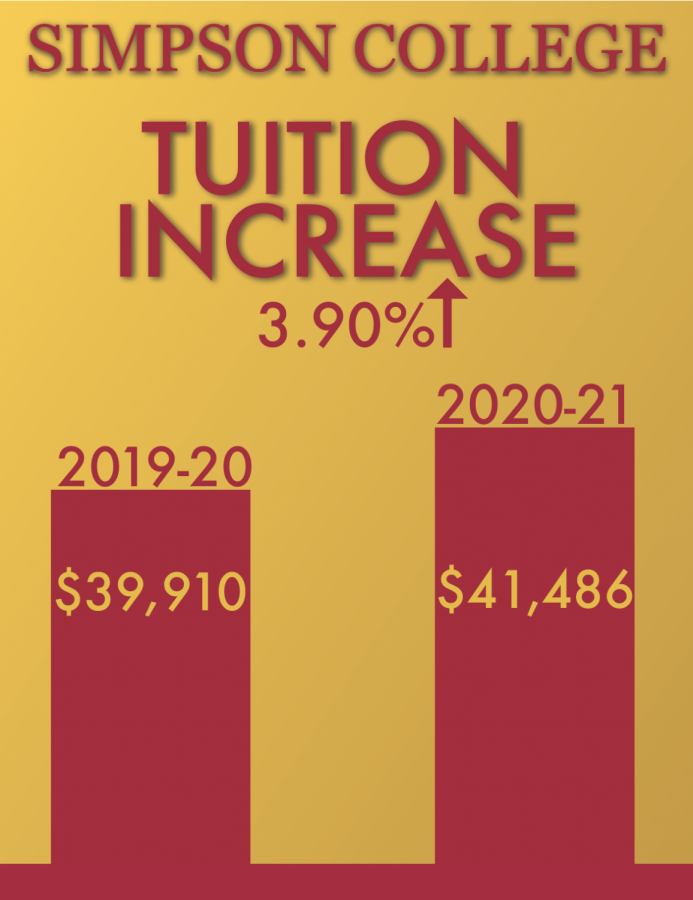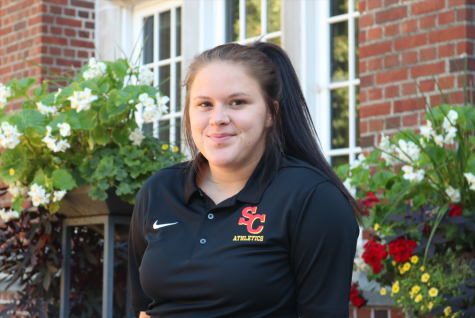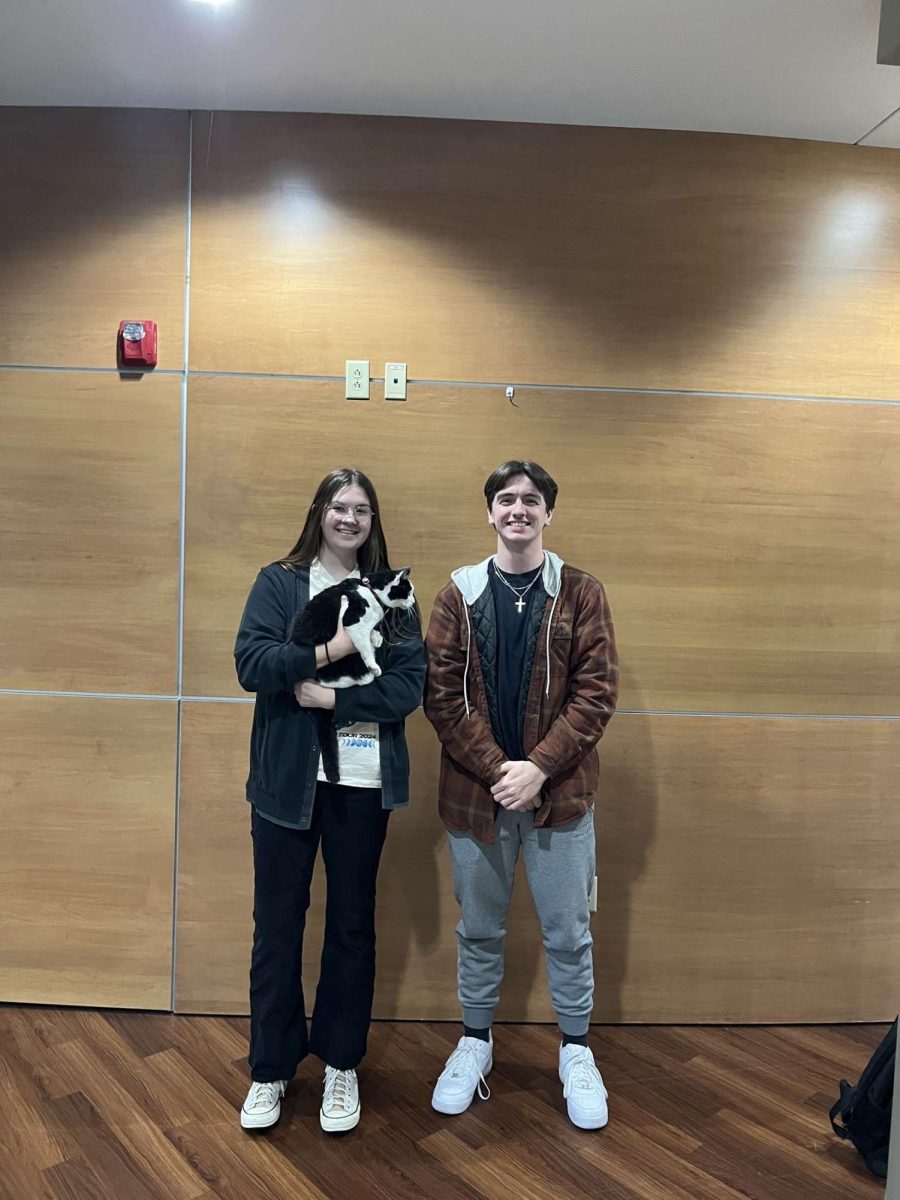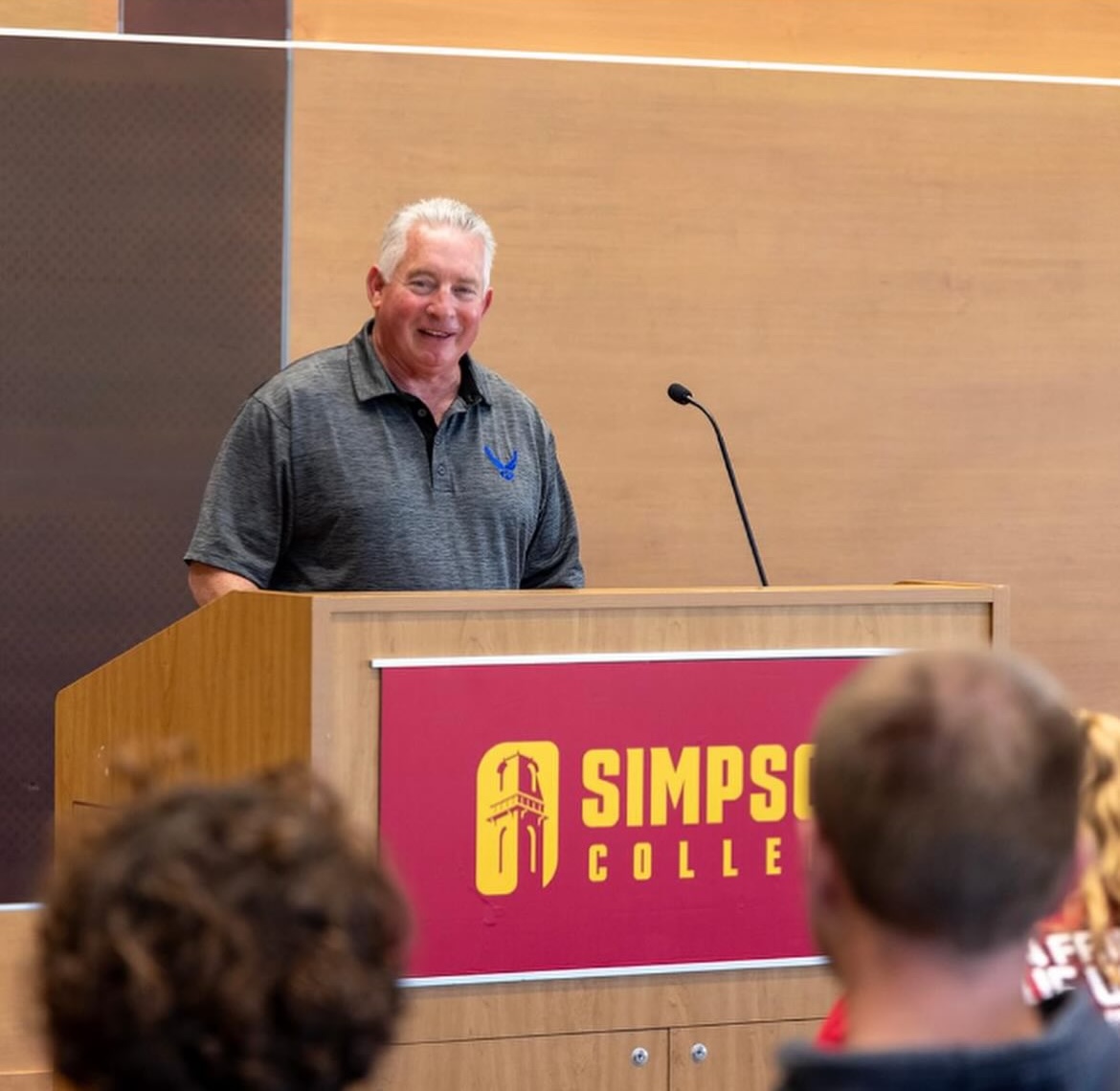Comprehensive Fee, Tuition Increase for the 2020-2021 School Year
January 22, 2020
Over winter break, Simpson College President Jay Simmons sent out an email announcing a 4.13 percent increase in the comprehensive fee for the 2020-2021 school year.
In Simmons’ email to students, he states, “I recognize and appreciate that you are making a substantial investment in pursuit of your bachelor’s degree. Everyone at Simpson joins me in remaining committed to providing you the resources and the opportunities that will lead to a fulfilling and successful life. The investment in your education will be one that will continue to pay you dividends in all aspects of your future.”
The comprehensive fee is comprised of standard residence hall rooms, full board, technology fee, student government fee, a campus center fee and tuition. The overall increase broken down includes: both standard residence halls and board going up by 5.24 percent, the technology fee going up by 4.35 percent, the student government fee increasing by 3.66 percent, the campus center fee staying the same and tuition increasing by 3.9 percent.
“Obviously we have expenses that go up every year,” said Vice President for Business & Finance Division Cathy Hoch. “Higher education is very labor-intensive, whereas some other corporations and institutions are able to automate lots of things and create efficiencies. Some of those things aren’t possible when this is really about face-to-face delivery of education.”
The increase has an impact on both current and incoming students. For current students, financial aid awards will stay the same so students will pay the increased difference unless there has been a significant change to a student’s financial situation. For incoming students, they will receive their financial aid award for the 2020-2021 school year and pay the difference with an increase in the 2021-2022 school year.
“I don’t think it’s fair for any of the students here, whether they are Simpson Promise students or not, to have to pay even more out of pocket for their education,” first-year Katie Burns said. “I don’t understand why the increase is necessary since things on campus are unlikely to change.”
Simpson is not the only school to have an increase. Typically, each year private schools in Iowa tend to have an increase between 3 to 6 percent.
“The private higher education model is that we’re charging a higher tuition rate than the state schools but were also providing really nice financial aid packages to help with that,” Hoch said.







